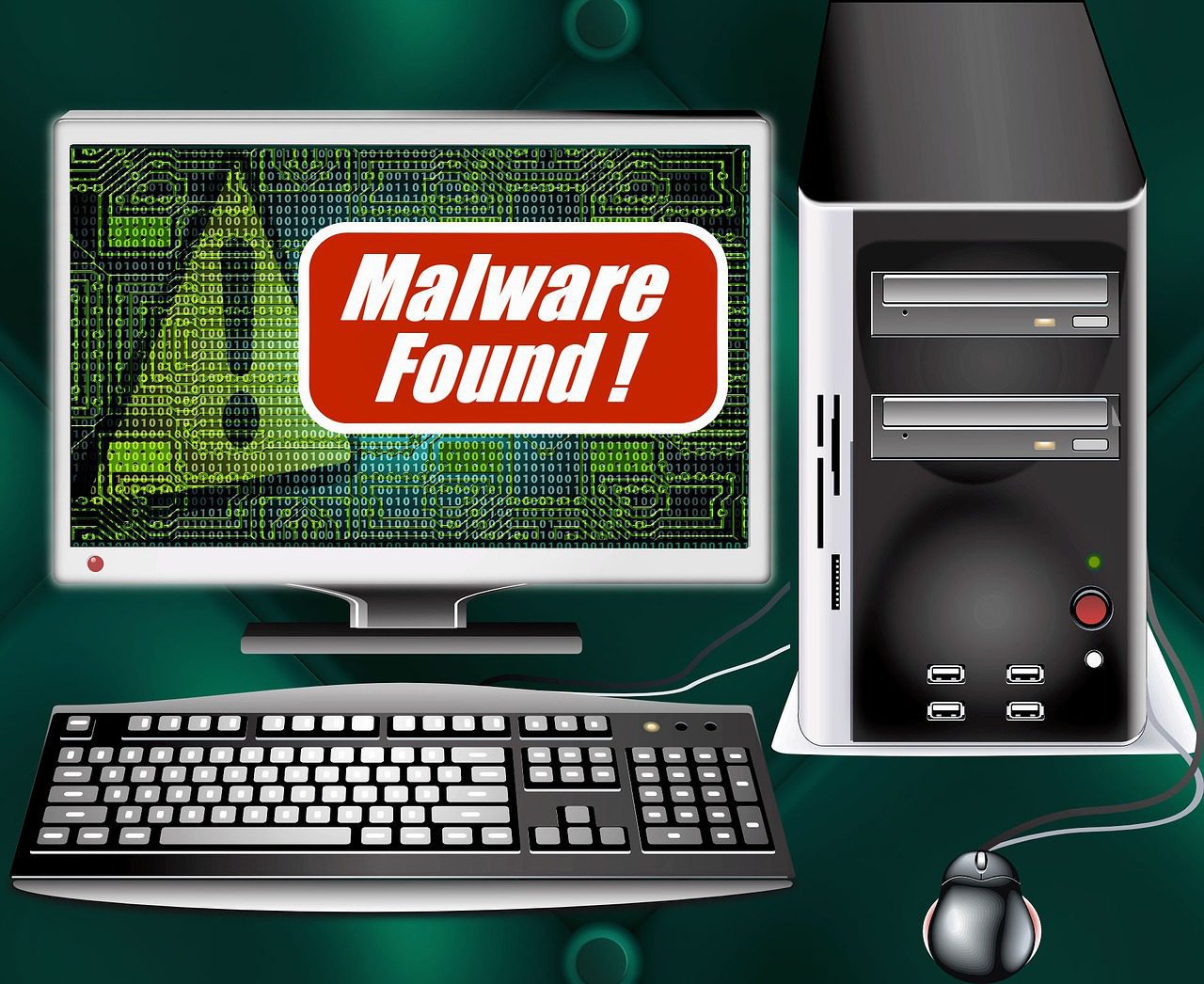After building your website in WordPress and running it in cyberspace, you need to maintain your security for you and your website audience regularly. Website security is a constant battle, and if not taken seriously, all your efforts will come in vain. WordPress’s system security issues are quickly addressed and are under the responsibility of WordPress to strictly maintain its brand integrity. However, plugins and the themes you incorporate in your WordPress website is not under the company’s care. These third-party companies might trigger and provide bugs, WordPress malware, and loopholes that are openly accessible to hackers. So, to help you feel at ease, we are here to give tips on how to scan and remove WordPress malware.
What is malware?
The progressive development of technology and its accessibility to a wider audience leads to potential cybersecurity attacks. Hackers or people who commit cybercrimes are getting better at manipulating a website. Hacking these days revolves around money, following identity thefts, spam distribution, and DDoS attacks, automated for maximum exposure. Malware comes from malicious software designed to manipulate and damage programmable devices, applications, services, or networks. Cybercriminals use this virus to extract data and use it for financial gain against their victims.
WordPress’s flexibility, allowing third-party plugins and sites, has increased the vulnerability of WordPress websites. It is now your responsibility to work on your website cybersecurity. The terms might be difficult to understand at first, but by following the steps and tips, detection and malware removal can be easy peasy.

5 Signs that a Malware invaded your WordPress
1. Unusual User Activity
Your WordPress website might be hacked when you notice a quick and doubtful number of new users on your website. You can also consider numerous password changes of existing users and user role changes. One more particular indicators of malware invasion are unapproved or unknown new content or changes in existing content in the website.
2. Sudden Website Traffic Changes
Like noticing unusual user activity, you can also observe a sudden sharp increase or decrease in your contents. If out-to-date content from your website suddenly boosts attention for no evident reason, it is a clear sign of potential malware. One more example is when your WordPress website caters Canadian market, and suddenly a burst of users from other regions visited your website for no particular reason.
3. Google Warnings
Google provides pop-ups if it notices evident malware on your site. It can appear when you or anyone tries to access your site. It prevents visitors from reaching your site and was shown a malware sign instead.
4. White Screen
This is an obvious error for your WordPress website. When accessing your website, a white screen display is a sign for WordPress malware.
5. Redirects to Unknown Links and Random Pop-ups
When your website redirects you to unknown links, you are certainly invaded by a virus. Same with random pop-ups that always show on your site when you haven’t incorporated or installed them on your website in the first place. Remember not to entertain or click these pop-ups as they may trigger or open bigger damage to your website. Note that a hacker only needs a few clicks to damage your website.
How to Scan and Detect Malware on your WordPress Website
Scanning your website for WordPress malware should be a routine included in your website or business operations. If the signs above are not visible, make sure to run a scan once in two weeks at a minimum. Also, perform scanning when you make changes to your website, such as adding content, plugins, etc. Consider the following points on how you can effectively scan WordPress malware.
1. Scan WordPress File Changes
Hackers normally modify your WordPress source code to attach the virus and do its job. Since WordPress is an open-source platform, it is not difficult to enter your source code, especially when you are not careful with all your clicks. Scan your WordPress files and codes to look if anything was changed, deleted, or added. Check your entire file structure and encoded coeds for any changes or abnormalities. Consider using file integrity monitoring plugins to scan your WordPress websites.
2. Install Security Plugins
Security plugins available today are specifically made to detect malware for WordPress websites. Some plugins, however, require you to pay for premium versions for stronger detection and removal features. Be careful in choosing your security plugin, as it is also a facade of some hackers. Consider using these suggested and proven effective security plugins for your WordPress website.
3. Monitor WordPress Websites’ Control Panel
Run a security check every time and keep a backup of your files. Hackers sometimes access your control panel and schedule the addition of malware infections in there that invalidates your effort to clean your site now and then.
4. Check the Web Server
Suppose you manage your web server, frequently backup and scan your whole operating system. Some hackers place malware outside the webroot making it difficult to detect by plugins. Use tools that monitor your web server and scheduled tasks of your system.
5. Check the Log Files
Review your WordPress activity logs. The log files provide you with information on what is happening in the run of your website. Look for the signs discussed earlier, such as login attempts and changes in third-party plugins.
6. Check the authenticity of Plugins and Themes
Plugins and themes are the easiest way for hackers to invade your website. These plugins, especially free ones, might be poorly coded and contain hidden malware. Just trying out these plugins and themes for a few minutes lets hackers access your source code. Always check for the authenticity of your plugins and themes. Prevent downloading themes and plugins that are free or from other unknown websites. You can also use the security scanners to check and discern the themes and plugins with malware. There is also a scanner for free and paid WordPress themes to see for a basic attack level.
How to Remove WordPress Malware
Note that before cleaning and removing your WordPress malware, create a backup of the source codes and files. Removal might damage your whole website and remove some parts from your site.
1. Backup your WordPress Website
You can manually create a backup for your WordPress websites such as files, sources codes, and a list of plugins and themes. You can also use backup plugins to save your whole WordPress files.
2. Change Passwords
Change all your WordPress passwords immediately to prevent access from hackers—all accounts such as user accounts, hosting accounts, database passwords, and SSH user accounts.
3. Remove and Clean your WordPress Website
You can hire a security professional or install virus removal applications and plugins to your WordPress websites. Professional security companies can help you clean or ensure that your WordPress website is free from hidden malware. This might cost you, but some security companies offer firewalls and stronger security to your website after the cleanup.
Installing or using security applications or plugins is easier and cheaper. Popular and effective plugins have easy navigation to delete malware and clean your website easily. Consider using trusted plugins as security applications can also be another malware.
4. Delete All Files in the public_html folder
After ensuring that you have your backup in all files, delete all the files in your public_html folder except for the CGI-bin folder and any server-related folders that are free of hacked files. You can use the web host’s File Manager to delete these files. Make sure that you can also access hidden files and delete any compromised files in all your WordPress website files.
5. Reinstall WordPress
Reinstall your WordPress completely. This resets everything in your websites, such as databases, themes, plugins, and images.
6. Scan and Clean your Computer
It is suggested to scan and clean your computer to ensure that the malware doesn’t reach your personal computer. If the malware enters your computer, the virus will constantly attack your website and your computer files.
Scan and Remove WordPress Malware: How to Maintain your WordPress Website
Hackers will always find a way to penetrate your website. After cleaning and removing your WordPress malware, always scan and check for viruses and prevent larger damages from happening. You can follow these simple steps to strengthen your website security in easy ways.
- Two-Factor Authentication
Setting up two-factor authentications is an extra layer for security to prevent hackers from having unlimited attempts in entering your system.
- Check User Profiles
Always check for unusual user profiles. Delete profiles from your database that are harmful.
- Provide Backup
Back up your site frequently to prevent big damages if an attack occurs.
- Regularly Perform Security Checks
Always make it a habit to scan for malware once every two weeks to monitor and prevent sudden attacks from hackers.
Recommended WordPress Security Plugins/Websites to Scan and Remove WordPress Malware
WordFence
● Scans your uploaded files, WordPress updates, plugins, and themes
● Will send you a notification if an infection is detected
● Optimizes your website and increase website speed
● Available in free and premium versions
● Add-on features: Blocks traffics from some countries and fake sources
Sucuri
● All-in-one solution
● Monitor files and scan malware issues.
● Performs security audits and notifies you of security updates.
● Available in free and premium versions.
● Premium version offers removal of malware and installation of firewall.
WPMU DEV Defender Pro
● Prevents forced malicious attacks with security shields
● Performs regular scans, audits website logs, and terminates unsafe IPs.
● Automatically performs security changes from time to time to improve your WordPress website.
● Offers a 21-days trial, available in 3 paid packages with different security features
iThemes
● Has clean interface
● Checks file integrity, provides limited login attempts and password strengthening tools.
● Scans malware.
● No firewall included.
● Available in free and premium versions.
● Premium version offers in-depth security notifications and stronger protection features.
All In One WP Security and Firewall
● Completely free
● Scans malicious patterns and monitor user accounts
● Prevents login after several failed attempts
● Provides firewall to your WordPress website
● Provides you to block suspicious IP addresses manually
miniOrange’s Google Authenticator
● Completely free
● Two-factor authentication serves as an extra layer of security in the login system.
● Let you choose the type of authentication method.
● Provides creation of custom pages
AntiVirus
● Completely free
● Generally for spam protection.
● Performs daily scan and sned security reports.
● Shows virus alerts in WordPress admin panel
● Cleans up your site after removal of plugins
● Scans databases, templates, and themes to ensure its authenticity.
IsItWP Security Scanner
● Website security scanner – no need to install.
● Quickly scan for malware, and website vulnerabilities.
● Easy and quick to use
● Provides you a detailed breakdown of security issues
● Offers step by step instructions to improve your website security
WordPress malware should be seriously addressed. You can use easy tools to help you scan and remove this malware. Always strengthen your website for you and your users’ online security. Choose the one that best meets your budget and your needs.

